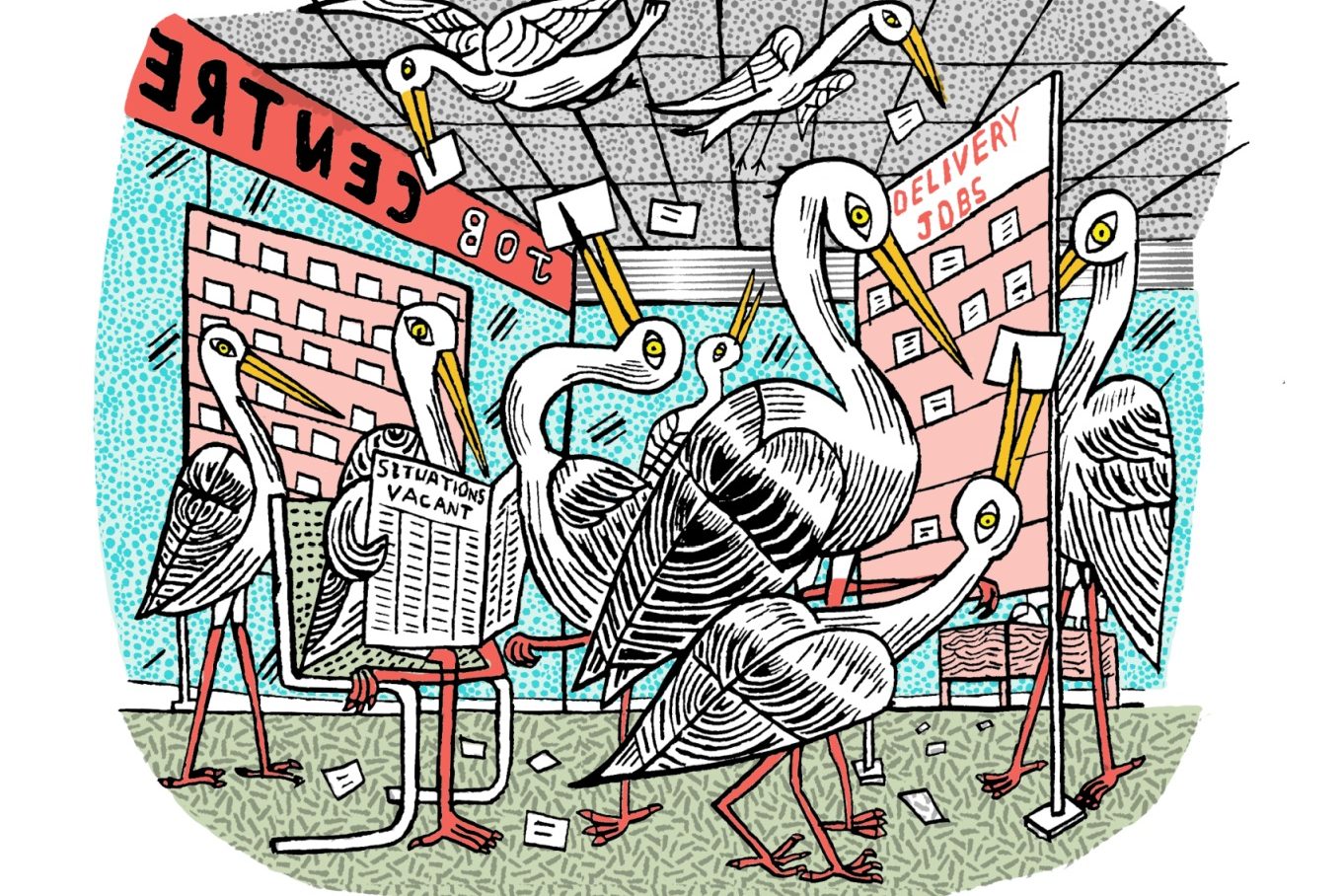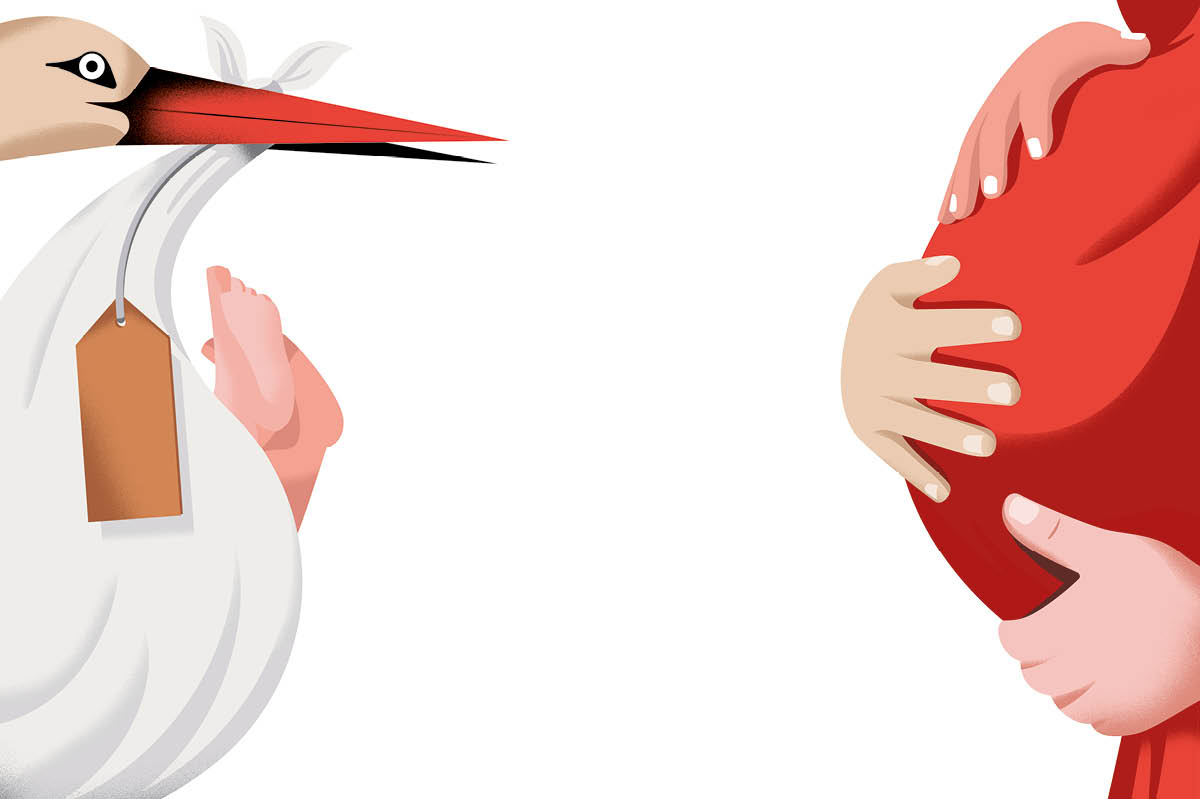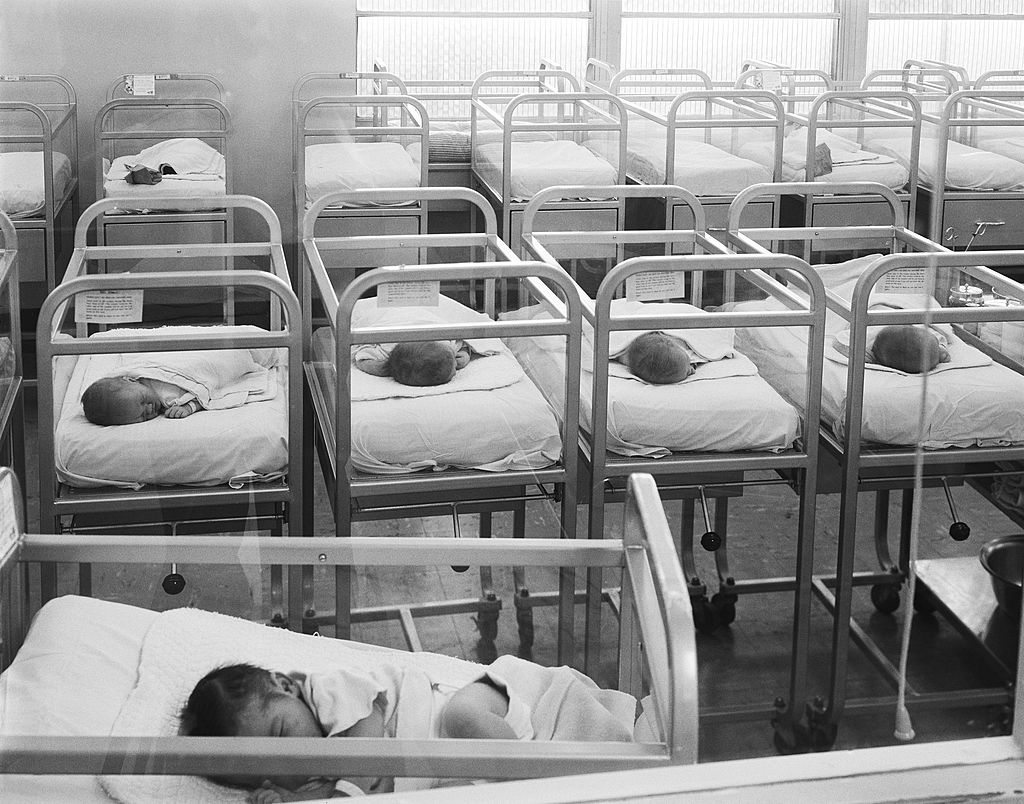Between 1300 and 1900 few things were more dangerous than giving birth. For poor and rich, the mortality rate was high. If the birth itself didn’t kill you, then puerperal fever very well might. Privacy was non-existent. If you were Marie de Medici, there was such a press of people in the lying-in chamber that you couldn’t get from the birthing chair to your bed — and that was not counting the 200 more in the ante-room. Still worse, though, than giving birth was being born. In 16th- and 17th-century England, 20 percent of children died before the age of five. If you managed to survive your arrival and four months of swaddled immobility, there was still every chance you might be burned, trodden on, eaten by animals in your home or squashed by your mother in bed. Hard to know what Malthus was worried about.
No drily academic treatise, this little book delivers just what the author promises in the introduction: exploring the art and artifacts of birth and infancy, from the later medieval period to the beginning of the 20th century in western Europe and North America. Progressing from conception to birth, lying-in, nurture and the milestones of child development, religious ritual and folklore and the pitfalls of neglect, abandonment and abuse, it reads, and looks, like the distillation of a lifetime’s work.
In her 150 pages of text Sue Laurence has cherry-picked from a huge collection of literary and visual sources — the bibliography is seven pages long — to produce a historical narrative studded with sobering and peculiar facts and anecdotes and a wealth of revealing illustrations. Take the role of the midwife, for instance. Held to account for the lives of mother and baby, the midwife was also expected to perform emergency baptism, testify in cases of rape and infanticide and confirm the child’s paternity. Though the responsibility was great, the rewards could be astonishing: the French midwife who attended Henrietta Maria at the birth of our future Charles II was paid £1,000. And not all midwives were female. From the 17th century, the male midwife, or barber surgeon, appeared on the scene and changed the accoutrements of childbirth, not to ease the passage of a woman’s labour, but to make it more comfortable for the assistant.
Men, in fact, make a number of surprising appearances in this book, none more bizarre than in the couvade — a tradition illustrated in a 16th-century French manuscript which shows a man whose wife has just given birth. He has taken to bed and, save for a fetching red hat, sits naked from the waist up, cradling the newborn child while a midwife offers him sustenance.
With this sort of material, gender polemic is entirely, and refreshingly, unnecessary. Take, again, the once universal Christian ceremony of ‘churching’ a new mother. Analogous to the Jewish ritual cleansing of a woman after childbirth, it took on, under Archbishop Laud in the 17th century, a penitential flavor that battens on the old belief that childbirth, with its pains and risks, was the price that women paid for the sin of Eve. Predictably, the ceremony was not without its profitable side for the church. In essence a rite of blessing and thanks-giving, it evolved to include the presentation to the mother of the ‘chrism’ cloth with which her baby’s head was wrapped at its baptism. This, with an accompanying donation, was then dropped into the church’s purpose-made box. Laurence, with the curator’s eye for the tangible that distinguishes this book, has found a beautifully carved example of one such box in St Clement’s, Outwell, in Norfolk.
This book itself is a cabinet of curiosities, startling, comic and tragic. There is the anguish of Sir Richard Croft, the physician attending Princess Charlotte, the Princess Di of her day, who shot himself three months after her death and the death of her son in childbirth. Conversely, there is the delight of the first woman to undergo a trial of chloroform during labour — so thrilled with the results that she named her child Anaesthesia.
Who knew that Beaumarchais gave the proceeds of his play The Marriage of Figaro to the promotion of maternal breastfeeding? Or that Marie Antoinette visited Rousseau’s island grave where there was a bench specifically designed for nursing mothers? And what of the poor powerless babes themselves? What would the wretched French foundlings, fed directly from the udders of goats and asses — illustration provided of course — have given for the Irish practice of leaving the child’s right arm unbaptized ‘to preserve the belligerent side of the infant’?
This article was originally published in The Spectator magazine.

























